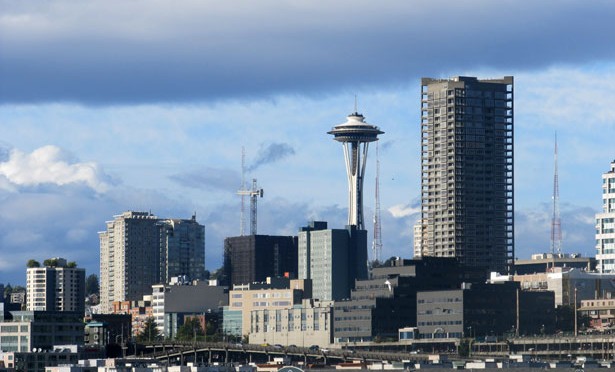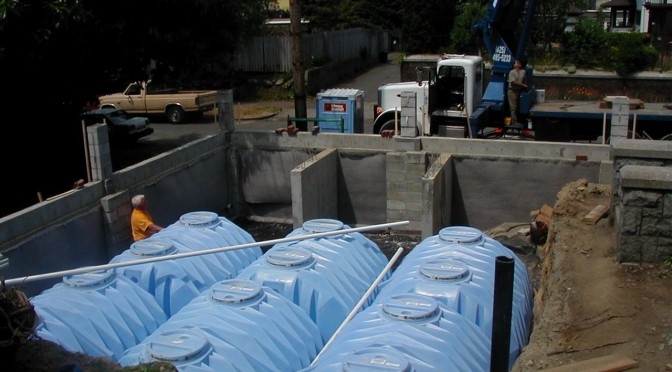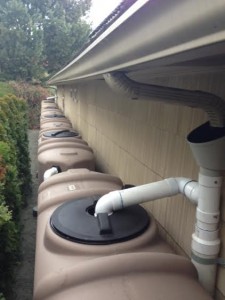With limited space in urban areas, cement cisterns are being built beneath homes as a rainwater harvesting solution.
 With the new “Green Storm Water Infrastructure” or GSI mandate, Seattle based RainBank Rainwater Systems is seeing increased interest in rainwater collection. But, with limited space on an urban building lot, the storage of rainwater in above ground tanks is not an option when required to mitigate thousands of gallons of roof runoff.
With the new “Green Storm Water Infrastructure” or GSI mandate, Seattle based RainBank Rainwater Systems is seeing increased interest in rainwater collection. But, with limited space on an urban building lot, the storage of rainwater in above ground tanks is not an option when required to mitigate thousands of gallons of roof runoff.
With many new residential construction projects building on small city lots, there is just not enough room for a rain garden. One way to solve this issue is with a cement vault, constructed beneath the house, which stores the captured rain water for potable use.
The average 2,000 square foot roof area will yield over 44,000 gallons of water. However, a cement vault cistern needs special engineering and considerations. Water weighs approximately 8 lbs per gallon and 1 cubic foot equals approximately 8 gallons. Calculations of weight and sheer need to be engineered for Seattle’s seismic zone. Additional ventilation should be considered along with aeration.
 Cement water tanks are not naturally waterproof; cracks in concrete can result years after construction. The use of a liner, whether spray on epoxy, or a poly bag will prevent groundwater from entering the water tank as well as improve water quality.
Cement water tanks are not naturally waterproof; cracks in concrete can result years after construction. The use of a liner, whether spray on epoxy, or a poly bag will prevent groundwater from entering the water tank as well as improve water quality.



 New stormwater regulations for runoff and green storm water infrastructure are adding to the costs of new residential and commercial construction in Seattle and elsewhere. Infiltration of runoff from roofs, driveways, and all impervious surfaces are mandated by local and Federal agencies. While infiltration does help reduce storm water runoff, the added costs of implementing infiltration or a rain garden can be considerable, with no return on investment for the home owner or building’s owner.
New stormwater regulations for runoff and green storm water infrastructure are adding to the costs of new residential and commercial construction in Seattle and elsewhere. Infiltration of runoff from roofs, driveways, and all impervious surfaces are mandated by local and Federal agencies. While infiltration does help reduce storm water runoff, the added costs of implementing infiltration or a rain garden can be considerable, with no return on investment for the home owner or building’s owner. While the average monthly billing increases are not enough to pay for a rainwater catchment system, the costs of designing and implementing an infiltration system or a rain garden are significant enough that if redirected to designing and building a rainwater collection system along with lower water and sewer bills, a homeowner or building owner will recognize a return on investment.
While the average monthly billing increases are not enough to pay for a rainwater catchment system, the costs of designing and implementing an infiltration system or a rain garden are significant enough that if redirected to designing and building a rainwater collection system along with lower water and sewer bills, a homeowner or building owner will recognize a return on investment.